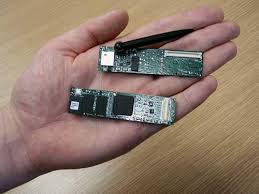Sections
SMART sensors are the typical sensors that hold wireless communication and embedded microprocessors, that hold the potentiality to monitor, examine and maintain a particular system. This was the ultimate result of the finite fabrication, smart structures and designs of the experienced engineers, who have managed to create a smarter future from the core of intelligence and creativity. This is the new step of sensors which was created to enhance the abilities of a normal sensor.

The ability to monitor simultaneously assures safety too. The main difference between the traditional sensors and smart sensors is that, the smarts ones have wider intelligence ability when compared to the traditional sensors. The common function of a normal sensor is to sense information and then transform it in the form of electrical signals. The normal sensors have three crucial parts which are
The integral part of the smart sensor is its microprocessors. These microprocessors carry out a plethora of functions such as digital processing, code conversion of analog to digital or digital to frequency, interfacing functions and calculations too. These even decide when they have to store or delete any part of the data in accordance to the input along with that, they automatically function at periodic working hours to minimize power consumption. One thing can be noted here, that the usual smart sensor is quite small when compared with the standard ones.
There are several technologies that are involved in the working of this type of sensor, this technology give the sensor its ubiquity and make them the “smart” way of sensing.

Micro Electro Mechanical Systems (MEMS): This system helps the sensor to work in a smarter way, by allowing them to handle huge amount of data in just a fraction of second. The usual data that gets recollected by the sensor are worked with the microprocessors, which through advanced computation clear or store the data.
Such type of technology makes these sensors more adaptable and enhances its self calibration abilities. The main fundamental to the smart sensing era lies in the monitoring system that are well supported by the conventional instruments and computational technology to bring something robust like SMART sensors.
Very Large Scale Integration Technology (VLSI): The devices that are part of the Micro Electro Mechanical System are developed with the help of Very Large Scale Integration Technology. This means that, the components are able to perform both mechanical and electrical functions. The tools of MEMS can be used in any environment. Along with that, this technology even brings the chemical phenomenon that is required for sensing that converts the recorded data to electrical signals that can be used in form of processing, display, recording and transmission. The main thing that is granted by this technology to the smart sensing device is its minimalistic design and the small shape.

Wireless technology is the heart and core of SMART sensors. The wireless technology makes sure that the sensor can be fixed anywhere without the complications of handling any type of wire, or its related fixing. Recently, several work and research has been placed in this sector to bring affordable wireless sensors, which are cost-effective and easy to use. This work has developed immensely and today one can explore the wireless sensors at acceptable rates, avoiding the chaos of cabling and lining.
Communication: This is often denoted as the process where certain information is conveyed or exchanged. This is one of the basic applications of Smart sensor as they give information about possible thing that they are sensing.
Multi Sensing: The one and the most important factor that makes these sensors smart is the fact that they have the ability to sense more than one physical quantity or chemical reaction and then transfer the electrical signals to the desired place.
Computation: This is the place where the user of the SMART sensors can obtain a variable or deviation from the stipulated measurements. This is easily adapted by the sensors especially during extreme weathers or high temperatures.
Self-Calibration: This is the place where the sensors adjust itself through the input of the device and work with the initial adjustments that were made. But, this problem will never occur with the sensors that have smart sensing abilities because the integral component microprocessors make sure that the self-calibration property of the senor is attained at the right moment with the right value.
Though, the size of the smart sensor is decreasing day by day, but the technology that it holds within it has become remarkable. There are current processes involved which tend to take smart sensing to a whole new level where one sensor would be able to sense an entire house or building.
Sections